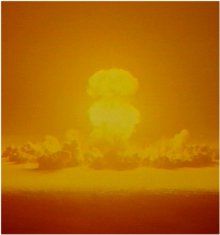30 January 2003
Fixing DNA Damage
by Kate Melville
 Scientists at St. Jude Children's Research Hospital have discovered a novel biochemical process that plays a critical role in helping cells in the body respond to DNA damage, such as that caused by exposure to radiation, environmental toxins or free radicals.
Scientists at St. Jude Children's Research Hospital have discovered a novel biochemical process that plays a critical role in helping cells in the body respond to DNA damage, such as that caused by exposure to radiation, environmental toxins or free radicals.
The findings could lead to new approaches to prevent cancer, better ways to treat cancer and to the development of sensitive methods determining whether people have been exposed to radiation or environmental toxins, according to the researchers.
A report on this discovery, published in the current issue of the journal Nature, describes this critical early step in a cell's response to DNA damage. This step, a chemical modification of an enzyme called ATM, allows the enzyme to initiate a series of events that ultimately halt the growth of a damaged cell and help the cell survive.
The finding is important because DNA damage caused by radiation and environmental toxins can lead to mutations or cell death, and can also contribute to the development of cancers.
Michael Kastan, M.D., Ph.D., chair of the Department of Hematology-Oncology at St. Jude and Christopher Bakkenist, Ph.D., also of St. Jude co-authored the research.
The St. Jude researchers found that ATM is activated by a signal from damaged DNA only seconds after the damage occurs.
The activated ATM, in turn, activates other proteins by attaching a molecule called "phosphate" to them in a process called phosphorylation. This sets off a cascade of biochemical reactions that amplifies the initial ATM response.
Among the proteins phosphorylated by ATM are Brca1 and p53. It was already known that these proteins play important roles in preventing cancer, and that mutated forms of Brca1 and p53 are responsible for inherited cancers, such as familial breast cancer. The new St. Jude findings thus provide new insights into the way cells signal to both Brca1 and p53 following DNA damage.
The scientists are hopeful that they can use this information to improve therapy for many types of tumors.
"Because ATM is central to a cell's response to irradiation, blocking its activation or activity might make virtually any type of tumor much more sensitive to radiation therapy," Kastan said. "The new molecular mechanisms identified here should allow us to achieve this aim by blocking ATM activity, which would make tumors more sensitive to radiation."
The St. Jude researchers also developed an antibody that specifically recognizes activated ATM, and thus identifies only those ATM molecules that are responding to DNA damage. "Our technique for identifying activated ATM is so sensitive that we've been able to show that it takes only a couple of breaks in the entire DNA of the cell to activate and initiate all of the cell's response mechanisms," Kastan said.
The identification of these molecular mechanisms and the development of specific antibodies against activated ATM might also provide a very sensitive way to determine if cells in a person have been exposed to an agent or toxin that damages DNA, according to Kastan.
"Such an assay has many obvious potential uses," Kastan said, "including the assessment of exposure to dangerous agents in the environment." Another potential clinical benefit of these discoveries applies to cancer prevention. Since damage to the DNA appears to contribute to the vast majority of human cancers, enhancing the response of cells to DNA damage could reduce cancer development, Kastan noted. Therefore, the discovery of how ATM is activated could help guide the development of ways to improve cellular responses to DNA damage, including responses to oxidative stress that are either induced or natural.
"Based on the insights we've gained from our findings, we may be able to develop ways to activate ATM and thereby prevent or reduce the problems associated with DNA damage," Kastan said.
